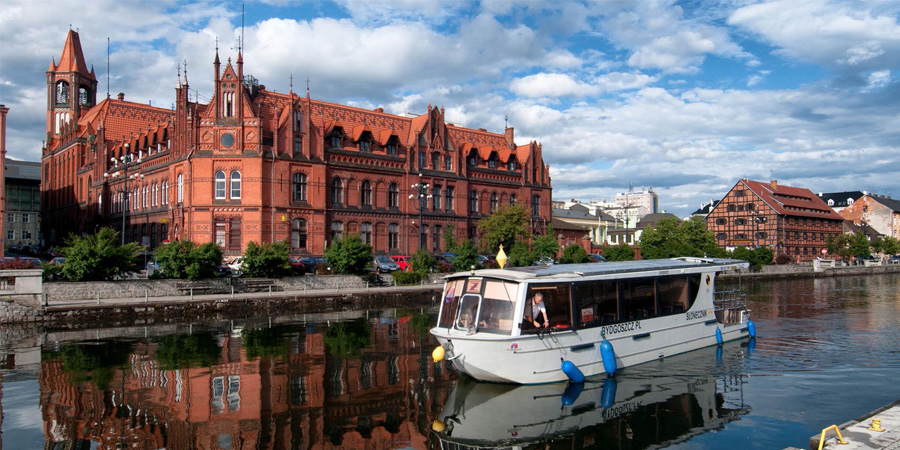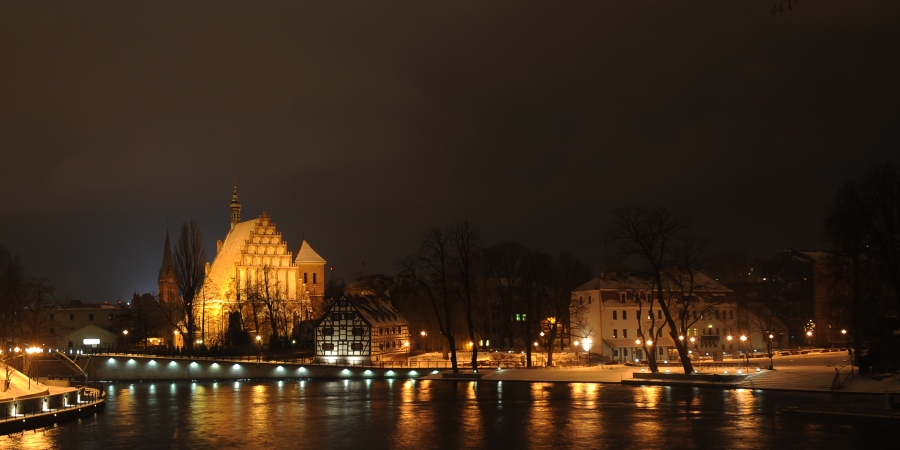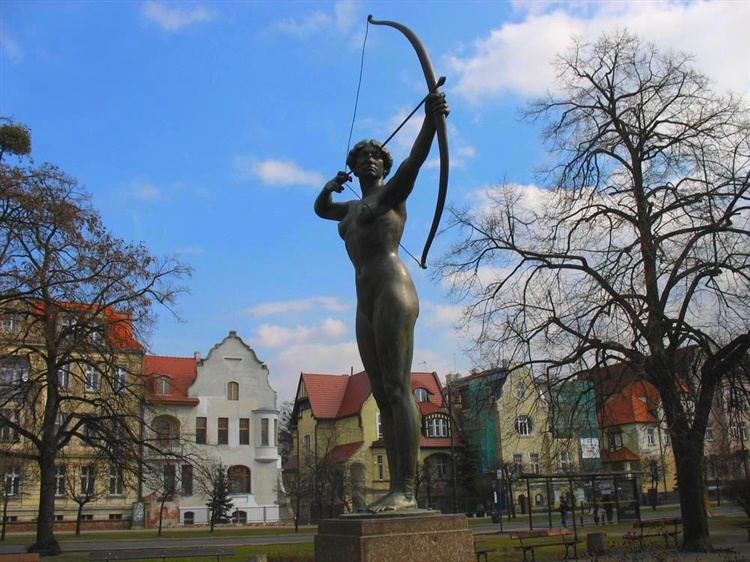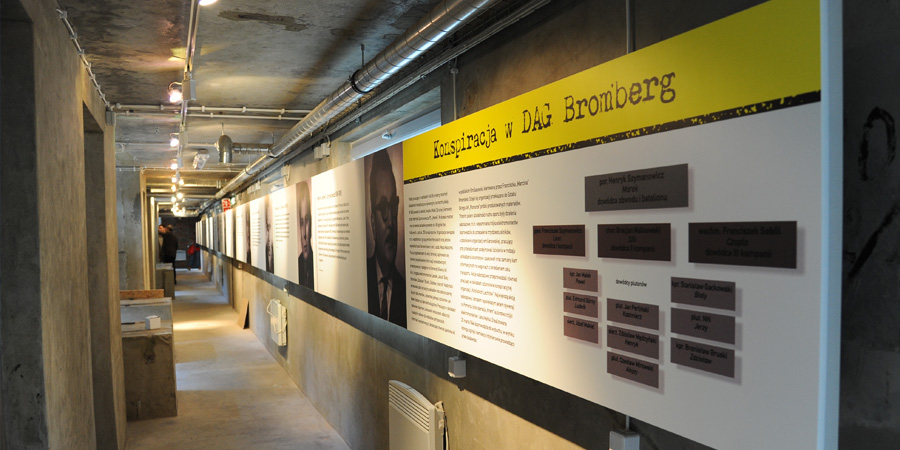
Bydgoszcz is a city in northern Poland, Kuyavian-Pomeranian Voivodeship, inhabited by more than 350,000 people. It’s a place eminently engaged in miscellaneous cultural, artistic and scientific events.
The town has an opera, concert hall, theaters, cinemas, museums, art galleries and several universities. Thanks to its location on riverbanks and canals, Bydgoszcz is frequently called a “polish Amsterdam”. The eastern part of the cities downtown was established on the principles of a city-borough. In Bydgoszcz is located the largest city park in Poland called Myślęcinek, it’s an ideal place to relax, wander or enjoy outdoor activities. In 2016 Bydgoszcz won the national competition for the greenest city in Poland. Located in the city center is the most visited place, especially during summer time – the Mill Island. Bydgoszcz is also famous for its nineteenth and twentieth century buildings, representing various historical styles, such as eclecticism, renaissance revival, neo-baroque, gothic revival, historicism and unique secession. Don’t miss the Cieszkowski Street – admire fine examples of eclecticism and secession, and maybe visit a local goldsmith.
What to see
Mill Island

Mill Island is a spacious heart of Bydgoszcz. It’s one of the most remarkable and enchanting places in Bydgoszcz. What makes the Island so unique? First of all, its location in the heart of the city, just few steps from the Old Market Square.
What’s more, nowadays the Mill Island is a green oasis located in the city centre. Water, footbridges, old mills (now museums), red-brick buildings reflected in the depths of Młynówka river (called Bydgoszcz Venice), groomed green – all this create an unique atmosphere of Bydgoszcz river island.
“Man crossing the River”

Jerzy Kędziora is the author of this remarkable sculpture . “Man crossing the River” was unveiled on the 1st of May 2004 to commemorate the Polish entry into the European Union. The sculpture was placed on ropes stretched between two banks of the Brda river and its weighting is a phenomenon – the center of gravity was shifted below the rope. Thanks to this, the sculpture maintains a balance.
Water Tower

In 1900, on the hill known today as Gen. Henryk Dąbrowski Hill, which is the highest elevation in Las Gdański (Gdansk Forest), the water tower (designed by Franz Marschal) was opened.
Inside, we can find an exhibition recounting the history of the local waterworks and sewers. After touring the industrial exhibition, we can take a narrow, winding staircase to access the lookout terrace, which offers a breathtaking, panoramic view of Bydgoszcz. There are several telescopes mounted on the railing, offering a more detailed view of the city.
The Opera Nova

Although the opera was built for over 30 years, the Opera Nova is now one of the most modern theatres in Poland. Its rich repertoire includes operas, ballets, operettas and musicals, concerts and performances. Opera Nova close neighbourhood includes:
- an observation deck connected to the bank of the Brda river
- a footbridge connecting the Opera with the Mill Island, through which you can reach the Bydgoszcz Venice or the Old Market Square
At the bottom of Opera Nova, right by the Brda river bank, is located a summer amphitheatre, which can hold up 200 spectators.
Granaries on the Brda river

The Bydgoszcz granaries on the Brda river are the symbol of the city. They have always been a natural city logo. In the past, these were among many grain storehouses in the city, and nowadays they belong to the Leon Wyczółkowski District Museum.
A particularly favourite spot of Bydgoszcz citizens is the characteristic granary next to Mostowa Street, sometimes called “Dutch” because of its gabled roof style. In front of the granary there’s a small amphitheatre, and a medieval bronze model of Bydgoszcz.
“The Archer Lady”

It is one of the most expressive symbols of Bydgoszcz. The sculpture is located in the Jan Kochanowski Park in the vicinity of the Polish Theatre and the Pomeranian Philharmonic. The sculpture was designed by Ferdinand Lepcke and was unveiled on the 18th of October 1910. “The Archer Lady ” has changed its location several times.
Exploseum. D.A.G. Fabrik Bromberg

In 1939-1945, one of the biggest armaments factories designed for the military activities of the Third Reich was built in the Bydgoszcz Forest. The conglomerate of secret production of gunpowder and ammunition, built by forced labor, was one of the companies of the enterprise Dynamit-Aktien Gesellschaft (DAG), which roots date back to the 1860s. The Exploseum, operating in the area since July 2, 2011, presents technology of explosive materials, the history of this site, an atmosphere of that period, but first of all it documents slave labor of thousands of people, the heroic fight of the underground and acts of sabotage.